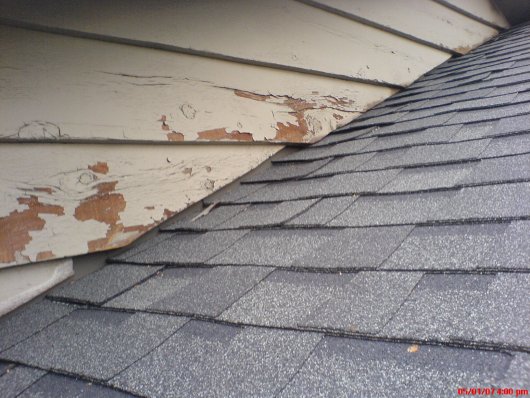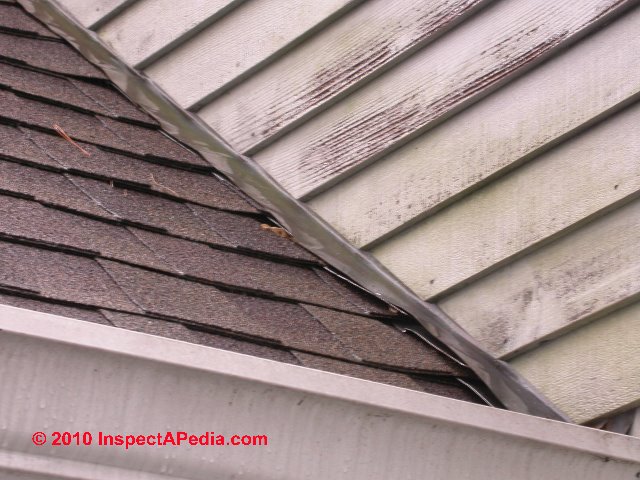The solution to rotting sidewalls is a small piece of bent metal called a kickout flashing at roofing suppliers which simply directs all that water away from the wall.
Flashing roof to existing siding.
The addition will have t1 11 siding and a small composite shingle roof.
A common problem area is the point where a gutter dies into an adjoining wall as the photo below illustrates.
On re roofs the sad case is that contractors do not always take the time to retrofit step flashing because it slows them down adds cost and additional carpentry work to repair or replace siding.
The house is sided with t1 11 4 inch oc.
Fasten that shingle with two galvanized nails at the top then cover the top of it with another piece of step flashing nailed to.
This has proven problematic over time as caulking the joint results in unsightly surface appearances due to the different textures as well as resulted.
Unless you re careful step flashing can allow water from the roof to slip behind the gutter and get behind the siding and even the housewrap.
This flashing is typically field fabricated from a sheet of 26 ga.
Lay a shingle over the step flashing starting at the roof edge.
Step flashing is used to provide a water tight connection where roofing adjoins a vertical juncture.
The exterior of a house presents plenty of opportunity for leaks.
I need ideas on how to sufficiently waterproof where the addition s roof attaches to the house siding.
Step flashing is needed whether a contractor installs new roofing or re roofs over existing shingles.
A common problem with cement board siding products and some other types of horizontal lap siding is that older installation guidelines called for caulking the joint instead of flashing the joint.
On lean to roofs where a sloping roof plane meets the siding endwall flashing is necessary to prevent leaks.
I really don t want to have to cut the existing siding.
Water will run more smoothly across the flashing and be pushed farther away from your home helping you avoid excess moisture that can damage your siding.
The increased distance between your home and the flashing itself makes t shaped flashing a better overall choice when you re going to install flashing on an existing roof.
Even if the roof has been properly flashed against the sidewall this one hasn t water can still run down the side of the house and behind the siding causing rot.
Posted march 4 2017 filed under roof installation roof repair maintenance.
Bent into an l shape.










